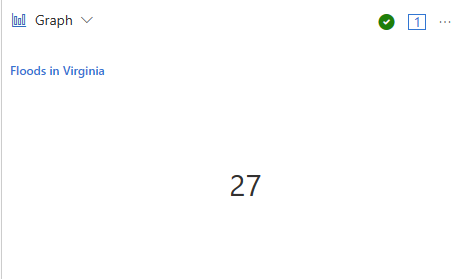Card
Applies to: ✅ Microsoft Fabric ✅ Azure Data Explorer ✅ Azure Monitor ✅ Microsoft Sentinel
The card visual only shows one element. If there are multiple columns and rows in the output, the first result record is treated as set of scalar values and shows as a card.
Note
This visualization can only be used in the context of the render operator.
Syntax
T | render card [with (propertyName = propertyValue [, ...])]
Learn more about syntax conventions.
Parameters
| Name | Type | Required | Description |
|---|---|---|---|
| T | string |
✔️ | Input table name. |
| propertyName, propertyValue | string |
A comma-separated list of key-value property pairs. See supported properties. |
Supported properties
All properties are optional.
| PropertyName | PropertyValue |
|---|---|
title |
The title of the visualization (of type string). |
Example
This query provides a count of flood events in Virginia and displays the result in a card format.
The examples in this article use publicly available tables in the help cluster, such as the
StormEventstable in the Samples database.
The examples in this article use publicly available tables, such as the
StormEventstable in the Weather analytics sample data.
StormEvents
| where State=="VIRGINIA" and EventType=="Flood"
| count
| render card with (title="Floods in Virginia")
